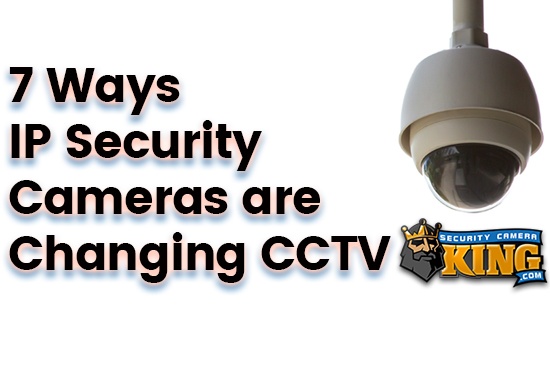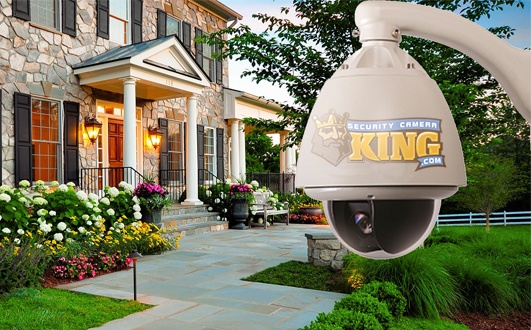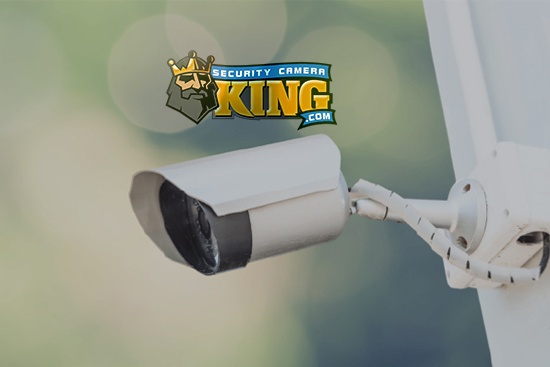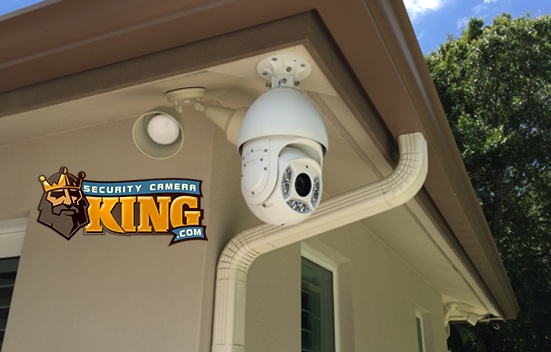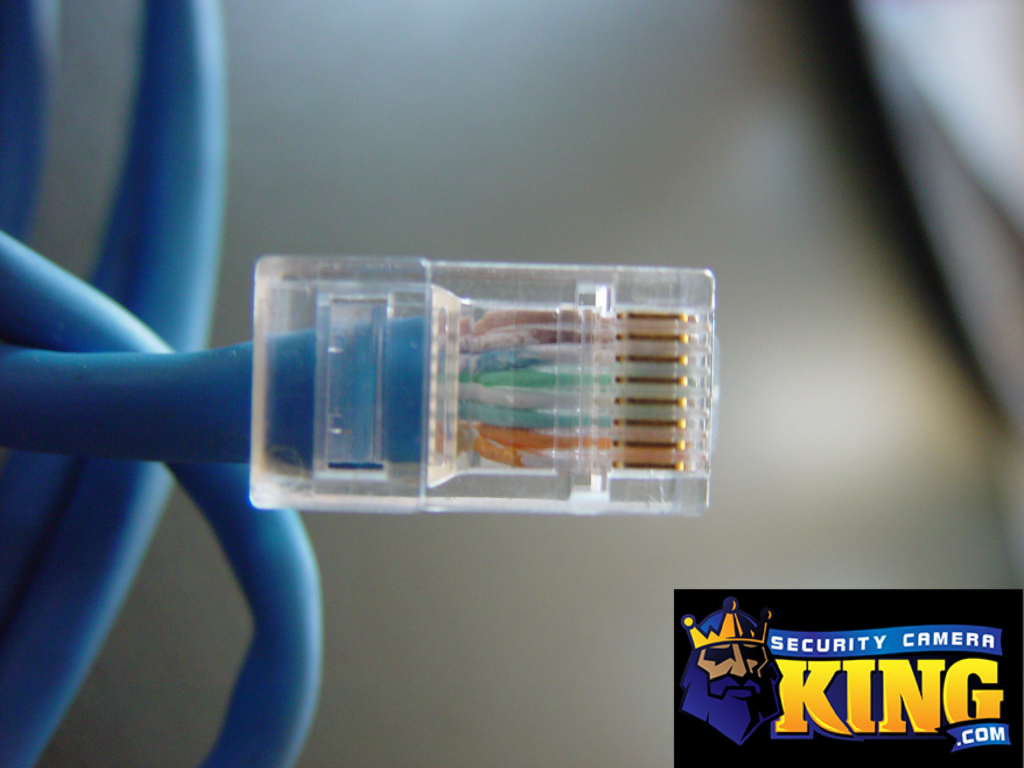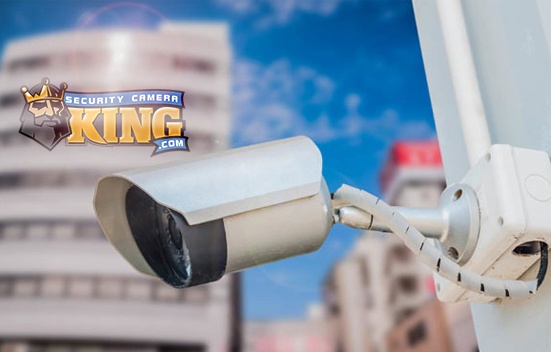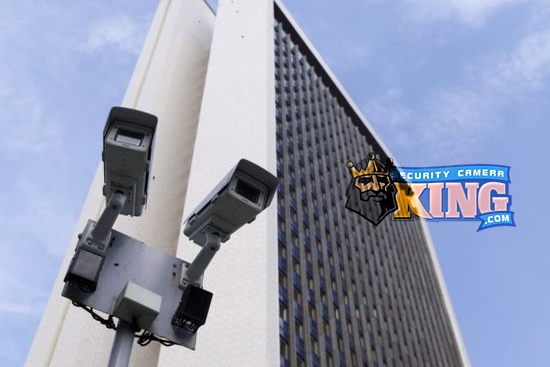We all have a pretty common image come to mind when we think of CCTV footage. It’s grainy, discolored, and has visible lines going through it. Basically, the image we think of is awful. Though TV shows and movies use this sort of imagery still, surveillance technology really has advanced. Just as the world continues to move towards a digitally connected community, security and surveillance have done the same. This is easily seen by the growing interest in IP security camera systems.
The term IP (which stands for Internet Protocol) alone can be seen as a sign of these changes to modern surveillance. But how exactly have IP security camera systems altered the way we think of CCTV? Let’s take a look at some key differences between the cameras of the past and the cameras of today.
1. IMAGE QUALITY
Think back to the technology we used in the middle of the last century. How much of it is still being used today, almost 75 years later? Analog CCTV cameras are one of the few products that would make that list. In fact, the NTSC video standard – first introduced back in the 1950’s – is still being used as the standard today. This means, by definition, analog CCTV cameras are using the same technology from almost a century ago (though many manufacturers attempt to claim this isn’t true for them).
This is not the case for IP security cameras systems. IP cameras come in a vast variety of resolutions, each better than the old standard found in analog cameras. Even the lowest quality IP camera is at least 1.3 Megapixels. That is still roughly 4x the resolution found in analog cameras. And IP cameras can range all the way to 30 Megapixels, producing crystal clear images over far greater distances or larger properties with fewer cameras needed to capture it. It also means more detailed images for facial or license plate number recognition and intruder identification.
2. EASY INSTALLATION & MAINTENANCE
It would be easy to assume the more advanced the equipment, the more difficult the installation. That’s just common sense. However, if you assume that about IP security camera systems, you assume wrong.
Analog cameras need separate cables to transmit video footage back to a video recorder. This means they require a minimum of two cables – one for video footage and one for powering the device. And PTZ (pan-tilt-zoom) cameras need another just to control their movements.
Many IP security camera systems are commonly designed as plug-and-play units. A single cable transmits the video signal, powers the unit, and gives you control of the PTZ functions. And the network connection means this cable only needs to be linked to nearest network switch instead of directly into a video recording device. Simply put, with fewer cables and connections, there are less potential problems. This further makes routine maintenance or servicing much easier.
3. USER-FRIENDLY
IP security camera systems are also easy to use. With more and more people making the switch, software developers have had a keen focus on usability. This makes both the transition process easy and the technology much more user-friendly.
Most people, regardless of age, are able to use a computer, tablet, or smartphone. If that is the case, then the functionality of IP systems is a breeze. With intuitive menu options and simplified layouts, a ton of great features can be easily navigated and learned without any training.
4. DIGITAL INFORMATION SECURITY
Analog transmissions are fairly simple to intercept and hack. If someone can access the casing over your cable then they can most likely steal whatever CCTV footage they want. There are ways to combat this – such as installing a fiber optic cable – but the ways to do so are very, very expensive.
Conversely, IP cameras boast advanced encryption technology features. This means your information and footage is guaranteed to be secure. During the transmission process, the signal is encrypted by the camera. Only once it hits the database can it be decrypted, ensuring anything intercepted is completely unreadable outside of your IP system.
5. EXPANDABILITY
Most analog security systems use a coaxial cable to send video from the camera to the recorder. The recording device (generally a DVR or a VCR) then converts the analog signal into a digital file. A key disadvantage to these recorders is the connection ports they have. With only a select number of ports, the number of cameras that can be connected to a single recorder is limited to how many ports it has. The more cameras in your surveillance system, the more ports you’ll need. And if you decide to add more cameras to cover the entire property then you’ll most likely have to buy more recorders to retain the footage.
- IP security camera systems do not have this issue and are easy to expand.
- There is no real limit to the number of cameras that can be added since they connect to the network instead of physical devices.
- NVRs (Network Video Recorders) save recordings on various hard drives and typically backup all their data automatically.
- The only cable needed is one that connects to the nearest network switch.
- The same NVR can be used to record properties across the country or even internationally, eliminating the need to set up a new system for every location.
6. INTELLIGENT VIDEO ANALYTICS
Traditionally, CCTV security systems are implemented for a reactive surveillance plan. What this means is only after someone sits and watches footage – whether in real time or not – can you discover something happening. Watching this footage takes time, meaning increased labor costs if you hire someone to do it. It also means something as simple as a coffee break or a glance at a phone can cause whoever is watching to miss an intruder coming onto your property.
Intelligent video analytics finally make proactive security and surveillance plans possible. Many VMS (Video Management Systems) come equipped with intelligent video analytics capable of monitoring areas using AI technology. The software is able to analyze all your feeds at the same time and will alert you the moment something is flagged. VMS features include motion detection, tripwire, missing object, scene change, and other incredible features that are programmed to alarm you the moment something out of the ordinary occurs.
7. COST-EFFECTIVE
Security and surveillance can be expensive. When you think about everything together – purchasing new products, installation, maintenance, and ongoing use – the costs add up quickly. IP security camera systems are, however, the cost-effective choice. Compared to analog systems, IP systems cost you a fraction of what you would pay and deliver more.
Less equipment, increased functionality, and better overall protection make IP security camera systems the preferred choice in modern surveillance plans. It is as simple as this: if security and surveillance are something you take seriously, then IP security camera systems are for you.
Learn more about us or shop for IP security camera systems online by visiting Security Camera King.
Facebook | Twitter | Google+ | YouTube

